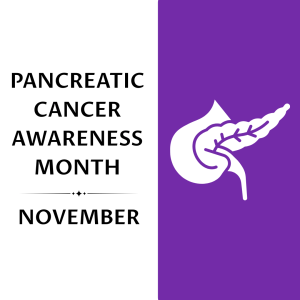Pancreatic Cancer Awareness Month: Strategic Actions & Ready-Made Resources

Key Facts:
- Incidence: An estimated 66,440 new U.S. cases and 51,750 deaths in 2024 (ACS).
- Disparities: Black Americans experience the highest pancreatic cancer incidence and mortality rates.
- Cost: Average first-year care can exceed $100k per patient, affecting payer risk pools and self-insured employers.
- Early Signs: Unintended weight loss, jaundice, and new-onset diabetes often precede diagnosis by months.
Editor's Note
This article is part of the BHM Healthcare Awareness Series, designed to provide quick, ready-to-use content and links to official resources for internal staff communications, patient education, and social media.
Feel free to copy, adapt, and share.
Observation Date
November
History & Impact
Pancreatic Cancer Awareness Month began in 1999 when patient advocates created a united front to spotlight a cancer that often goes undetected until late stages. Today, the observance is championed by the World Pancreatic Cancer Coalition and Pancreatic Cancer Action Network (PanCAN), with World Pancreatic Cancer Day (third Thursday in November) anchoring social-media “Purple” campaigns, educational webinars, and fundraising walks across 40+ countries.
Why it Matters
- Pancreatic cancer is the third-leading cause of U.S. cancer deaths and is projected to become second by 2030.
- Five-year survival is only ~13%, largely due to late diagnosis; making awareness, early-symptom education, and research funding critical for health systems and employers alike.
Quick Actions for Your Organization
For Leadership
Add pancreatic-cancer risk assessment and symptom education to enterprise wellness or population-health dashboards.
Sponsor CME/CE sessions with GI and oncology experts on high-risk screening protocols (e.g., hereditary pancreatitis, BRCA mutations).
Partner with PanCAN to underwrite local PurpleStride walks and employee-volunteer teams, reinforcing ESG goals.
For Implementation Teams
Launch a “Know Your Purple” intranet banner linking to the PanCAN awareness toolkit and printable symptom sheets.
Schedule 15-minute staff huddle scripts highlighting early warning signs for clinicians and front-office personnel.
Post weekly social tiles (#WPCD, #PancreaticCancerAwareness) using coalition graphics and a QR code for donation or screening-locator pages.
Resources
Ready-to-Use Assets
The following links provide resources & information for creating internal or external campaigns to support or promote this healthcare observance. Please vet these resources for alignment with your organization.

Talking Points
Copy & Paste Friendly
“Only 13% of patients survive five years after a pancreatic cancer diagnosis—know the warnings, share the signs. #PancreaticCancerAwareness”
“Purple isn’t just a color this November; it’s a call to fund research and boost early detection. Join our team on World Pancreatic Cancer Day.”
“New-onset diabetes in adults over 50 can be an early pancreatic cancer clue. Encourage at-risk patients to discuss screening options.”
Disclaimer: Please verify all information, usage rights, and related guidelines with the official observance organizers and your organization’s policies to ensure proper alignment.
Frequently Asked Questions (FAQ)
Q1. What metrics prove ROI for a Pancreatic Cancer Awareness Month campaign in healthcare organizations?
Track intranet click-through rates to awareness toolkits, employee participation in PurpleStride events, social-media impressions and shares, new patient screening referrals, and any uplift in provider CME attendance to demonstrate campaign impact.
Q2: How can non-clinical employees participate in Pancreatic Cancer Awareness Month at work?
Encourage staff to “Wear Purple Day,” share symptom-spotting graphics in email signatures, feature survivor stories in internal newsletters, host fundraising bake sales, and add pancreas-friendly recipes to cafeterias, boosting engagement beyond clinical teams.
Q3: Who is eligible for early pancreatic cancer screening under current NCCN guidelines?
High-risk groups include people with hereditary pancreatitis, Peutz-Jeghers syndrome, BRCA1/2 or PALB2 mutations, or two first-degree relatives with pancreatic cancer. Recommended modalities are MRI, CT, or endoscopic ultrasound for annual surveillance.
Partner with BHM Healthcare Solutions
With over 20 years in the industry, BHM Healthcare Solutions is committed to providing consulting and review services that help streamline clinical, financial, and operational processes to improve care delivery and organizational performance.
We bring the expertise, strategy, and capacity that healthcare organizations need to navigate today’s challenges – so they can focus on helping others.
Are you ready to make the shift to a more effective process?
